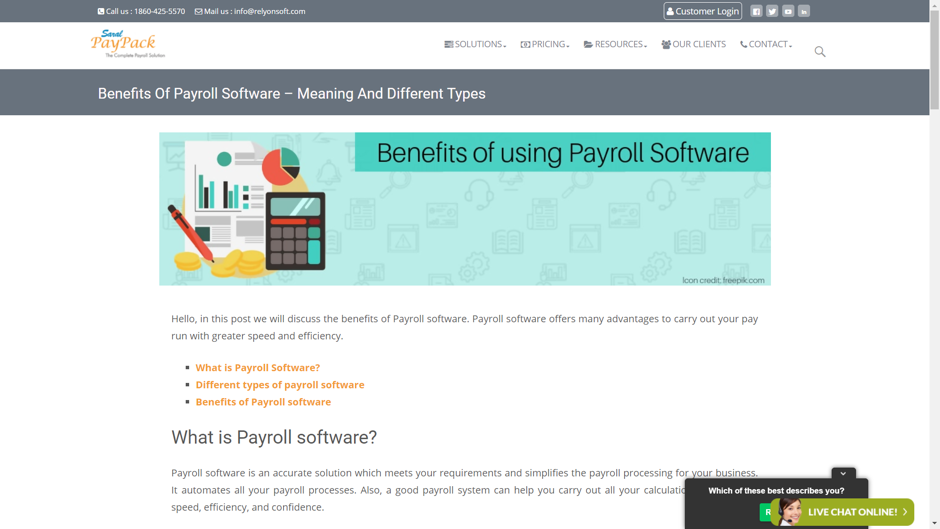
Content marketing is useful for both B2C and B2B businesses. However, there are differences in the way B2B and B2C companies should implement content marketing strategies. This is because the basic needs of B2B and B2C buyers are different.
In this post, we’ll look at six B2B content marketing best practices your business can use.
Know What Makes B2B Content Marketing Different
B2B and B2C content marketing strategies have a lot in common. The mediums used to create content can be similar. As can the type of content businesses produce. Additionally, it is important that whether you are a B2C or a B2B marketer, you focus on producing quality, targeted content with a clear goal.
However, there are differences. B2B marketing usually presents the logic behind how a product will help a business. It can focus on facts and figures that clearly show how a product can help.
While content marketing isn’t always strictly promotional, B2B content marketers can still create content showing the benefits of their product without being overtly promotional. For example, in this blog post, payroll solution SalaryPack talks about the advantages of payroll software without explicitly promoting its own product.

Create a Content Strategy
The most important thing for any content marketer is to have a strategy. Here is a quick summary outlining what you should do, along with specific things B2B marketers should focus on:
- Define your content goals – Most B2B content marketing strategies will focus on lead generation. Be sure to track how your content performs in relation to your goals so you can adjust where necessary.
- Define your buyer persona – This will be the person who makes buying decisions at a business.
- Decide which types of content you will produce – B2B content is more likely to include reports and case studies that show the benefits of their solution. Although, blog posts and videos can still be important.
- Decide where you will publish your content – As with B2C content marketing, these will be places where your buyer persona is likely to see it.
- Create an editorial calendar – Editorial calendars keep your content marketing efforts organized.
Use a Variety of Content Types
Producing content in various mediums is important as it will help get your content in front of people in a variety of places. Also, different types of content can be used to achieve different goals. Here are some ideas:
- Blog posts have great SEO potential and are a good way to get your site to show up on search engines which can help build leads.
- Videos are a useful way to explain how certain aspects of your product work. For example, a B2B software company could use screen capture software to show the product in action.
- eBooks, case studies, or reports can show in great detail how a product can help a business. Businesses can offer this type of content to buyers for free in exchange for contact details, which can help with lead generation.
- Infographics are particularly useful in B2B content marketing as they make it easy for businesses to showcase statistics about how useful their product is. They also have good sharing potential and can be used to increase social exposure or generate backlinks.
Know Your Audience and Find Your Brand Voice
B2B writing has traditionally been quite dry and formal. While this may work for some businesses, it isn’t the only way to go. Here is a look at three B2B blogs that produce content with different tones.
- Xero is an accounting software provider and they generally create informative content of the style you might find in a newspaper.
- Neil Patel is a marketing consultant. He writes his posts in the first person and directly addresses the reader throughout.
- ZenDesk is a customer service product and their blog goes into quite a lot of detail on some highly technical topics such as AI and machine learning.
When choosing how to write your content, you should take into consideration who you are aiming it at. If your ideal buyer has a high level of technical knowledge, you should ensure that what you write is of a level they are likely to find interesting. On the other hand, if you go too technical you risk losing your target’s attention.
Neil Patel hit this balance perfectly. A founder or CEO with a beginner to intermediate knowledge of digital marketing is likely to get a lot of useful information from his posts.
Utilize your Industry Expertise
When producing content, it’s important to make it as high-quality as possible. Perhaps the best way to do this is to create content that uses your unique industry expertise or the expertise of people you employ. Doing so can help you position yourself as an authority in your sector.
- General Electric has a blog where they take in-depth looks into topics including asset performance management, IoT, and data.
- IBM’s Big Data and Analytics Hub provides insight and analysis into trends in AI, databases, and analytics.
- Law firm Sullivan and Cromwell have a section on their website titled “Legal Developments Affecting the Workplace” where they keep readers up to date with changes to labor and employment law. Those interested in this topic will likely get a lot of value from this blog.
Diversify your Marketing Channels
It’s important for B2B content marketers to have a number of channels where they can publish and share content. Your company website may be your priority, but you should also think about publishing content on other platforms. For example, LinkedIn, Medium, or YouTube.
You should also think about where you promote your content. It’s always a good idea to build an email list as it gives you a direct link to potential customers. Beyond this, it can be quick and easy to post your content to social media and this can be an effective way to get your content in front of many people.
Finally, if you produce reports with interesting conclusions, you could think about creating a press release and sending it to relevant publications who may be happy to write about your findings, thereby increasing the overall audience who see the report.
Wrapping Up
Content marketing is a useful way for B2B businesses to generate leads and sales when done properly. When creating content, businesses should ensure they have clear goals and that their content is created and published in line with these targets. This will allow them to create truly effective content.






